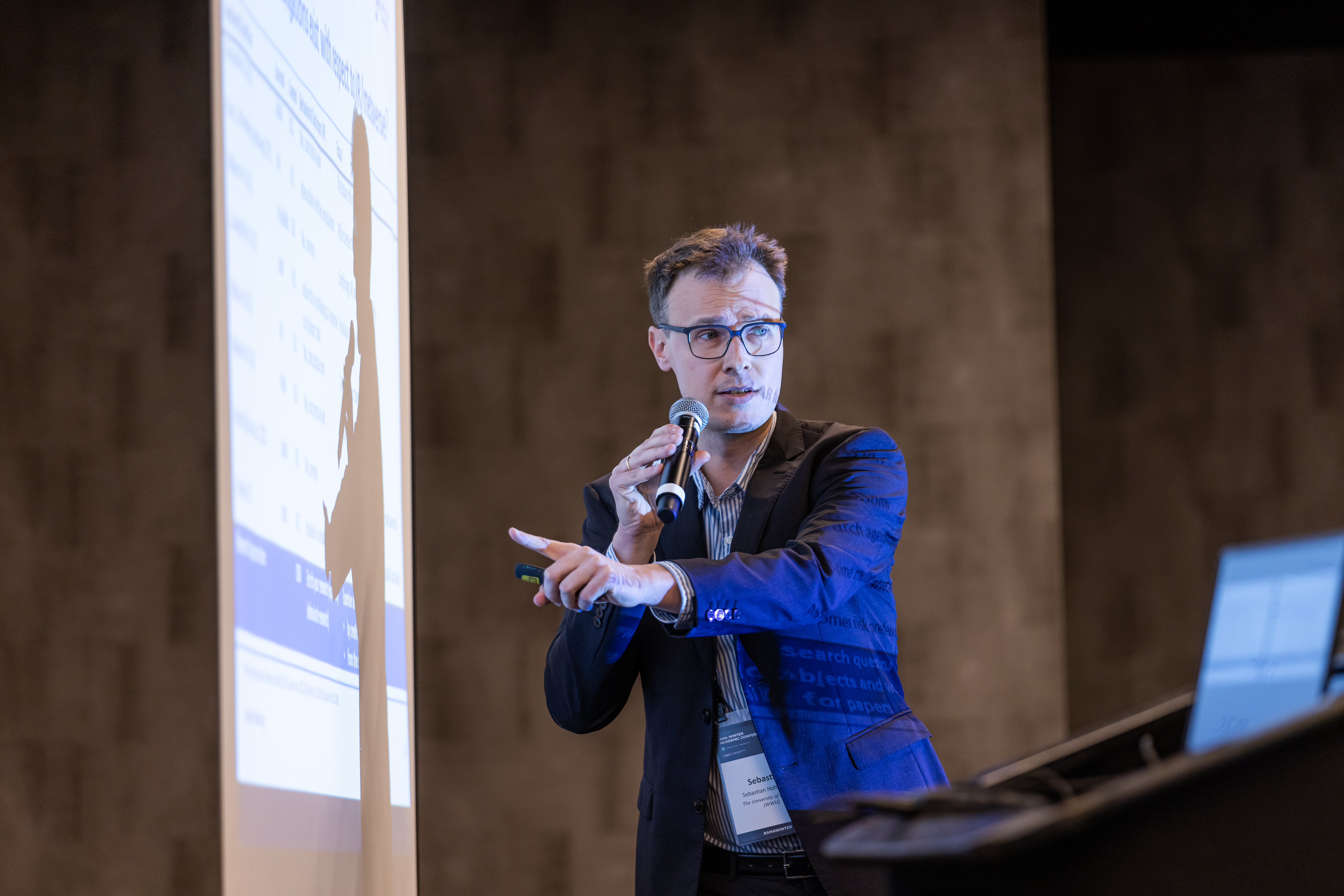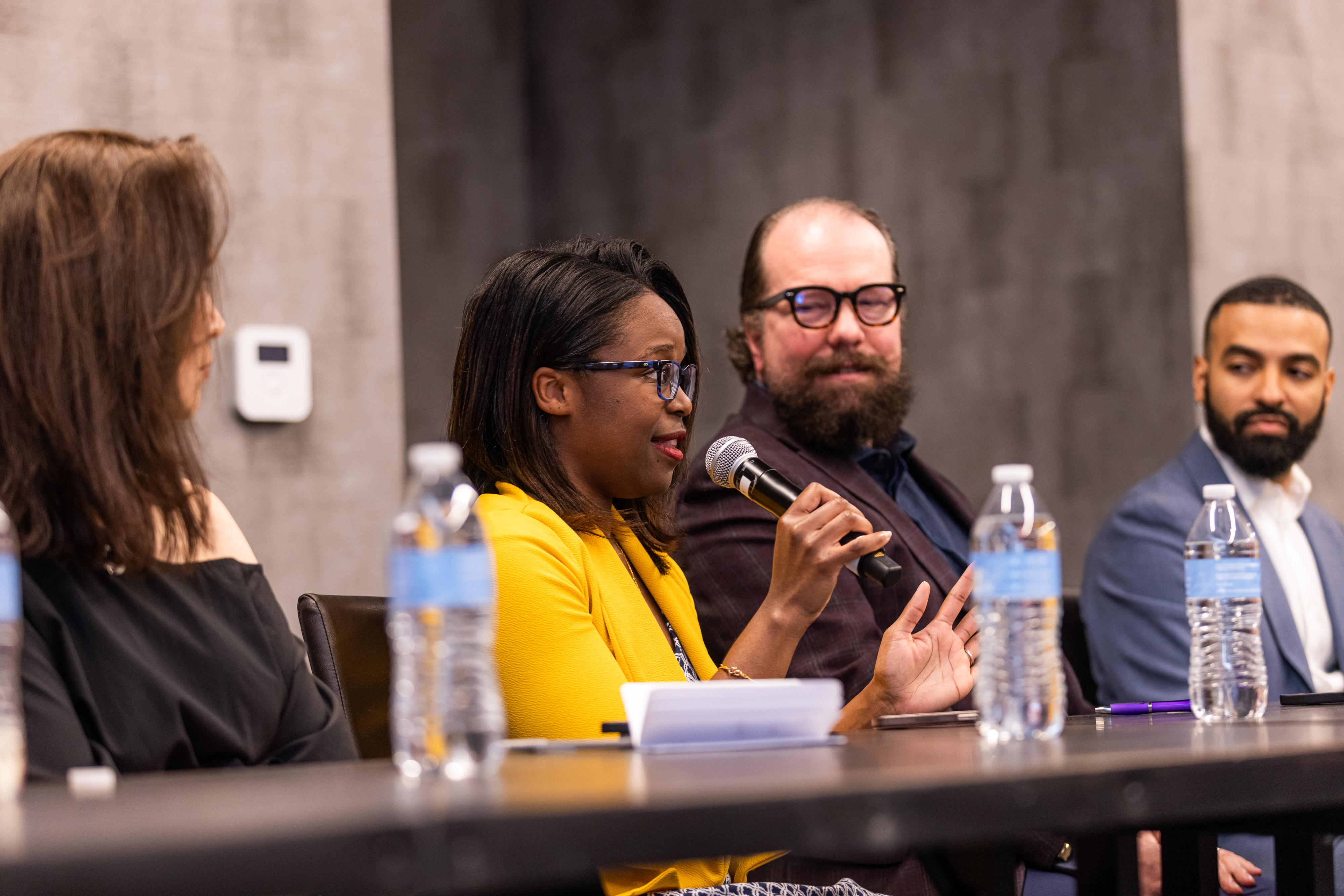We at the AMA pride ourselves on highlighting cutting edge and important research in the marketing discipline, in part through showcasing this work at academic conferences. This page is intended to be a guide to submitting to our academic conferences. Please direct any specific submission-related questions to Riley Fickett, Manager of Academic Communities, at rfickett@ama.org.



Submission Types
Submission Template – Poster Presentation
Poster sessions provide an opportunity to share research in the working stage–that is, with at least part of the data having been collected and analyzed, but not necessarily ready for submission to a journal. All conference posters are presented simultaneously during the poster session. Poster sessions can be particularly useful for getting input at intermediate stages of a research project. All poster abstract submissions must be directed to only one track.
In order for the poster to appear in the program, at least one author must register for the conference.
Format and Submission Process for Posters:
Prepare and submit electronic documents in PDF format.
Please include
1) Title
2) Key Contributions to academe and practitioners (300-word limit)
3) Extended Abstract (1,000-word limit)
4) Table or Figure (optional)
5) Selected references.
Authors have the option of including one table summarizing results and/or one figure (these do not count against the word limit). References also do not count against the word limit.
Please note that submissions with text longer than 1,300 words will not be reviewed.
To ensure an anonymous review, authors must avoid revealing their identities in the body and reference section of the paper. Authors should follow these rules:
- DO NOT save the file with author-identifying information in the file name.
- DO NOT include a front page with author-identifying information.
- DO remove the author identifying information from the document’s file properties
Confirmation that your abstract was submitted successfully will be sent via email to the submitter.
Accepted poster authors must agree to prepare a poster for display during the session, be available to discuss their research, and answer questions at the poster session. This session is generally the first evening of the conference.
Submission Template – Competitive Papers
Manuscripts addressing substantive or theoretical topics are sought for competitive paper sessions. Most competitive paper submissions are works in progress.
If the paper is accepted, at least one author will need to register for the conference to present the paper. Failure to have an author register for the conference may result in the paper being removed from the program. Submission of the same (or substantially overlapping) manuscript(s) to multiple themes is not permitted. As a reminder, papers are reviewed following a double-anonymized process; reviewers will not know who authored the papers, nor will authors know the names of their reviewers.
Format and Style for Competitive Papers:
Prepare and submit electronic documents in PDF format.
Please include the following:
1) Title
2) Extended Abstract (175-word limit)
3) Key Contributions to academe and practitioners (300 words)
4) Manuscript (up to 3,600 words)
5) Table or Figure (optional)
6) Selected references
Authors have the option of including one table summarizing results and/or one figure (these do not count against the word limit). References also do not count against the word limit.
[Please note that submissions with text longer than 4,100 words will not be reviewed].
To ensure an anonymous review, authors must avoid revealing their identities in the body and reference section of the paper. Authors should follow these rules:
- DO NOTsave the file with author-identifying information in the file name.
- DO NOT include a front page with author-identifying information.
- DO remove the author-identifying information from the document’s file properties.
Confirmation that your paper was submitted successfully will be sent via email to the submitter.
Authors of accepted competitive papers have the option of publishing either an extended abstract or a full paper in the conference proceedings. Choosing to publish an extended abstract gives authors the option to submit the paper elsewhere for publication after the conference.
Anyone may organize and propose a panel, although those who are unfamiliar with AMA conference panels are encouraged to discuss their ideas with the conference co-chairs or track chairs for developmental feedback before submitting a proposal. Panels provide a good vehicle to acquaint marketing academics with new perspectives, nascent theories, and provocative ideas; to bring diverse participants together around a common theme; and to integrate academically minded practitioners into the conference. Sessions involving participants from multiple countries, focusing on theory development or cutting-edge research directions, and offering insights regarding academic-business partnerships for teaching or research are particularly encouraged.
Panels should feature three or four presentations on a related theme. Another possibility is an interactive discussion among four to six panelists and a moderator. Other creative special session formats are encouraged, particularly those that generate attendee interaction.
All panel proposal submissions must be directed to only one track. Proposals for special sessions should describe the topic and its importance to marketing, summarize the issues to be covered, and identify all individuals (with their qualifications) who will formally participate.
Only panels being submitted on behalf of SIG Leadership teams should be submitted to the SIG Programming Track.
Format and Submission Process for Special Sessions:
Before submitting your panel to Ex Ordo, you should determine if you want to:
- Create a topic for an open panel and solicit papers from any interested author
- Create a closed panel and send invitations to colleagues to submit their work
When you log into the Ex Ordo platform, follow these steps to set up your panel:
- Under the Initial Submissions tab, select the yellow “New Panel” button.
- Choose the track that best aligns with your panel.
- Add the title and description for your panel. The title is how the panel will appear in the program if accepted, but the description will be visible only to those submitting to your panel and track chairs.
- Use the toggle to indicate whether the panel will be open for submissions or invitation only.
- As the person proposing the panel, you will be listed as the organizer by default. Add the appropriate people for the following roles:
- Convenor – The convenor is the person who would normally be known as the corresponding author. This person will receive email confirmations and reminders through Ex Ordo and will have the ability to edit the panel.
- Discussant – The discussant is the person who will moderate the panel if it’s accepted to the conference.
- Panel Chair – The panel chair is a person who will be presenting or speaking on the panel if accepted. Panel chairs can be added at a later time.
- After agreeing to the AMA’s terms, you can submit your panel. If you chose to make your panel invite-only, you can select on the “Copy Shareable Link” button on this screen to share the link with invited colleagues.
Confirmation that your proposal was submitted successfully will be sent via email to the submitter. Special session participants are all expected to register for the conference.
Submission Template – Intensive Workshop
Intensive workshops are intended to allow participants to deep dive into a topic over an extended amount of time. (For example: How do we research race? What can big data tell us about vulnerable populations? How can I prepare for the job market?) These sessions will run for four hours with a limited number of participants. In your proposal, please ensure that you demonstrate what will be achieved over the period of time participants are together. Only six to ten of these proposals can be accepted.



Final Submissions
The final submission step in the Ex Ordo platform allows authors (typically those who are presenting competitive papers) to include their work in the proceedings. Prior conference proceedings can be viewed at: https://www.ama.org/ama-academic-conference-proceedings/
Final submissions are due about one month prior to the conference on the early bird deadline. It is not required for authors to submit to the final submission step or include their work in the proceedings.
Authors who chose to submit a final submission to the proceedings can submit an extended abstract or full paper.
The AMA offers and encourages the option of publishing an Extended Abstract for authors who may wish to submit their full work to other publications subsequent to the conference.
Authors are encouraged to use the Extended Abstract Template and must upload their document as a PDF, double-spaced, in 12-point Times New Roman font.
Extended Abstract Guidelines
- Please begin with the following elements:
1. TITLE (bold, all caps).
2. Author Names, University Affiliations – No titles (Dr., Mr., Ms., etc.) should be used, nor should rank be indicated.
3. Contact Info: Under author names, please include the following statement for the lead author:
“For further information, please contact Lead Author’s Full Name, Title, Affiliation (E-mail Address).”
4. Keywords: Please provide a list of 4-5 keys words.
5. Description: Please provide a one (1) sentence description of your paper. - Please then standardize the organization and content of your Extended Abstract in accordance with the following headings:
1. Lead Heading: EXTENDED ABSTRACT (bold, centered, all caps)
2. Heading One: Research Question (bold, left-aligned, title caps)*
3. Heading Two: Method and Data (bold, left-aligned, title caps)* This section is not applicable for nonempirical papers.
4. Heading Three: Summary of Findings (bold, left-aligned, title caps)*
5. Heading Four: Key Contributions (bold, left-aligned, title caps)*
*Please limit your discussion under each of these headings to no more than 200 words.
No reference list is necessary. If necessary, please simply note “References are available upon request.”
Please do not include any graphic elements (e.g., display equations, tables, figures, appendices) in Extended Abstracts.
By choosing to submit a full paper, the author agrees to transfer full copyright of the paper, and thus it may not be submitted to, in review at, or subsequently published in another outlet.
All Full Papers MUST be submitted in PDF, double-spaced, in 12-point Times New Roman font. There is a 12-page limit. If your accepted submitted paper is longer than 12 pages, please edit it down for inclusion in the proceedings
- Please begin with the following elements:
1. TITLE (bold, all capital letters)
2. Author Names, University Affiliations -No titles (Dr., Mr., Ms., etc.) should be used, nor should rank be indicated.
3. Contact Information: Under author names, please include the following statement for the lead author: -“For further information, please contact Lead Author’s Full Name, Title, Affiliation (Email Address).”
4. Keywords: Please provide a list of 4-5 keys words
5. Description: Please provide a one (1) sentence description of your paper. - Please then standardize the organization and content of your Full Paper as follows:
1. Begin with the heading ABSTRACT, centered in all capital letters.
-This should then be followed by an abstract of no more than 50 words.
2. The next major heading should be INTRODUCTION, aligned left, in all capital letters.
3. In the text, use the following heading structure:
–MAJOR HEADING (bold, aligned left, all capital letters)
–Secondary Heading (bold italics, aligned left, title style capital letters)
4. REFERENCES: A complete list of references is required at the end of Full Papers. Include only the references directly mentioned in the paper.
Use the Journal of Marketing reference style throughout the manuscript: italicize the publication name, do not indent or tab the references, and return twice after each reference.
Please note that embedded visual elements often do not reproduce well, so it is very important to keep visual elements simple and, when applicable, provide original files. Poorly reproduced graphic elements will be excluded from publication at the discretion of the AMA.
